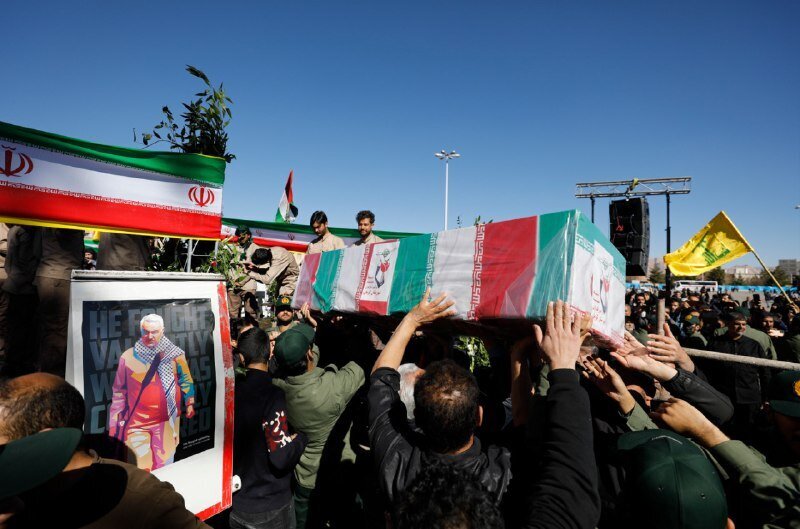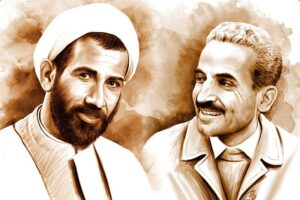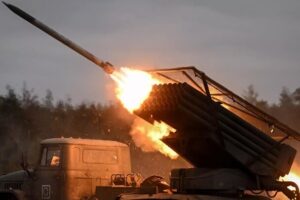
As Iran’s interior minister announces the arrest of several suspects, journalists and media outlets point out the growing amount of evidence pointing towards Israeli involvement in a terrorist attack that killed at least 84 civilians in the southeastern city of Kerman.
Ahmad Vahidi revealed on Friday that multiple individuals suspected of playing a role in the attack have been taken into custody. A subsequent statement by the Iranian intelligence ministry confirmed the arrests, adding that 9 people had been arrested in 6 different provinces. It also attributed the explosions to the Daesh terror group.
Twin explosions tore through a densely populated area near the tomb of the late anti-terror commander, Lieutenant General Qassem Soleimani, on Wednesday. Both blasts were caused by suicide bombers.
The locations of the explosions were approximately 1.5 km and 2.7 km from the burial site of General Soleimani as the terrorists couldn’t reach the tomb itself due to inspection gates.
Iran’s Intelligence Ministry said its agents seized explosive devices and raw material, explosive vests, remote-control devices, detonators, and thousands of pellets used in explosive vests when raiding the two terrorists’ residences. One of the suicide bombers was identified as a Tajik national.
In a statement released on its affiliated Telegram channel on Thursday, the Daesh terror group claimed responsibility for the deadliest attack in Iran in the past 40 years. The group alleged that two brothers carried out the attacks by detonating their explosive vests as they approached mourners heading towards General Soleimani’s burial site.
===Inconsistencies in Daesh statement suggest direct Mossad involvement
While some Iranian officials have already hinted at Israel’s involvement in the Wednesday terror attack, journalists and active media members have been bringing to the limelight the differences between
Daesh’s latest statement and its previous ones to prove a second party’s complicity.
The extremist group acknowledged responsibility for the assault more than 30 hours following the explosions. This departure from its usual pattern is unconventional, as the group typically asserts its role in acts of terror immediately after their occurrence. Also, Daesh generally precedes attacks with ominous posts on its platforms shortly before they unfold. Surprisingly, no such forewarning preceded the blasts in Kerman, contrasting with the group’s established modus operandi.
Daesh asserted that two of its members executed the suicide attacks and subsequently shared an image of the purported assailants. However, in the image disseminated by Daesh, both individuals are completely obscured, with their faces fully covered and their eyes deliberately blurred. That’s while previous attacks carried out by Daesh members featured images of the perpetrators in full clarity.
The text of the recent statement also exhibited notable disparities from prior declarations made by the extremist group. Historically, Daesh has consistently referred to Iran as the “land of Persians” or the “state of Khorasan.” However, the latest communication from the terrorists explicitly uses the country’s actual name: Iran. This shift has sparked suspicions regarding the origins of the statement, prompting questions about whether it might have been authored by an external entity and subsequently handed to the group for dissemination on its platforms.
In addition to current and former Israeli officials and military members expressing glee over the loss of lives in the Kerman terrorist attack on social media, the characteristics of the attack also raised suspicions about Israel’s potential involvement. As per an Iranian lawmaker who inspected the blast site, the explosives employed to trigger the suicide vests were identified as RDX. Known for its significantly higher potency compared to TNT, RDX has frequently been associated with Israel’s past use in carrying out targeted assassinations within Iranian territory.
===Why would Israel orchestrate a terror attack in Iran?
Israel has been trying to weave a web of provocations to turn the whole region into a ring of fire. following its significant defeat on October 7 at the hands of the Hamas resistance group and its overall lackluster performance in a ground offensive in Gaza, Israel has grown increasingly desperate for direct involvement from Washington in the ongoing warfare.
Despite the U.S.’s diplomatic support and provision of weaponry used in Gaza, it has, thus far, displayed reluctance to escalate the conflict beyond Gaza. In fact, reports suggest that the U.S. has been pressuring Israel to halt its fruitless campaign by the end of January.
Recognizing its inability to eliminate Hamas and its deteriorating international standing, Israel now views a regional war as necessary to permanently eliminate the Axis of Resistance. From Israel’s perspective, the opportunity to draw the U.S. into a war with Iran and its allied groups may not arise again.
This motive has led to a series of orchestrated attacks in recent weeks aimed at provoking Iran and triggering a full-scale regional conflict. The sequence began with the assassination of a top Iranian military advisor in Syria, followed by an attack targeting a Hamas leader in Beirut. While some analysts anticipated a similar assault on Iranian soil, the direct targeting of civilians in a terrorist attack was largely unforeseen.
While Daesh may have carried out the terrorist attack in Kerman, it has become evident to many around the world that Israel played an undeniable role in orchestrating the terrorist act by at least giving orders and providing logistics.
Iran should undoubtedly make a strong response to the aggression, but it is important that the country hits back at Israel when, and where it hurts the most.
First published by Tehran Times




